We may receive a commission when you use our affiliate links. However, this does not impact our recommendations.
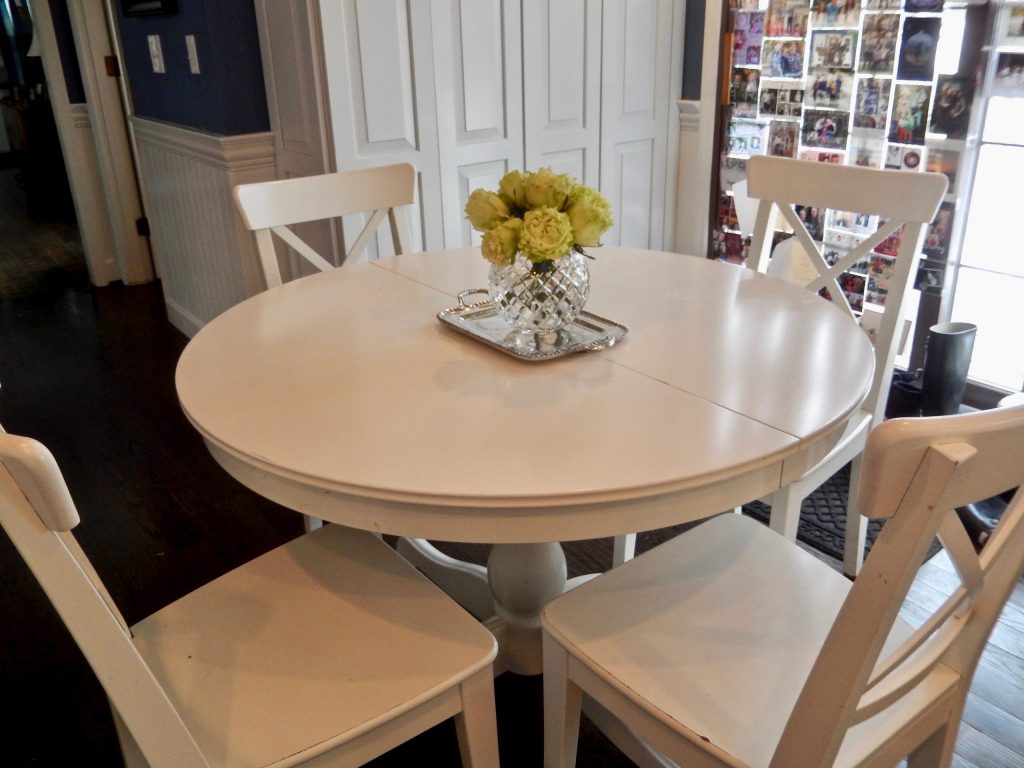
After a recent visit to our relative’s home in Cincinnati, I noticed that a lovely centerpiece was decorating the family breakfast table. I did not remember seeing a centerpiece on that table before. But knowing how busy and crowded this table can become, especially when all the cousins and their kids descend upon our relative’s house, I began thinking whether the centerpiece was placed there not just for decorative purposes. Being born with an inquisitive “Inspector” gene burned into my DNA, I couldn’t help it and reached out to look under the centerpiece’s silver tray. What I discovered was a big patch of exposed particle board on the edge of one of the top’s white-painted leaves.
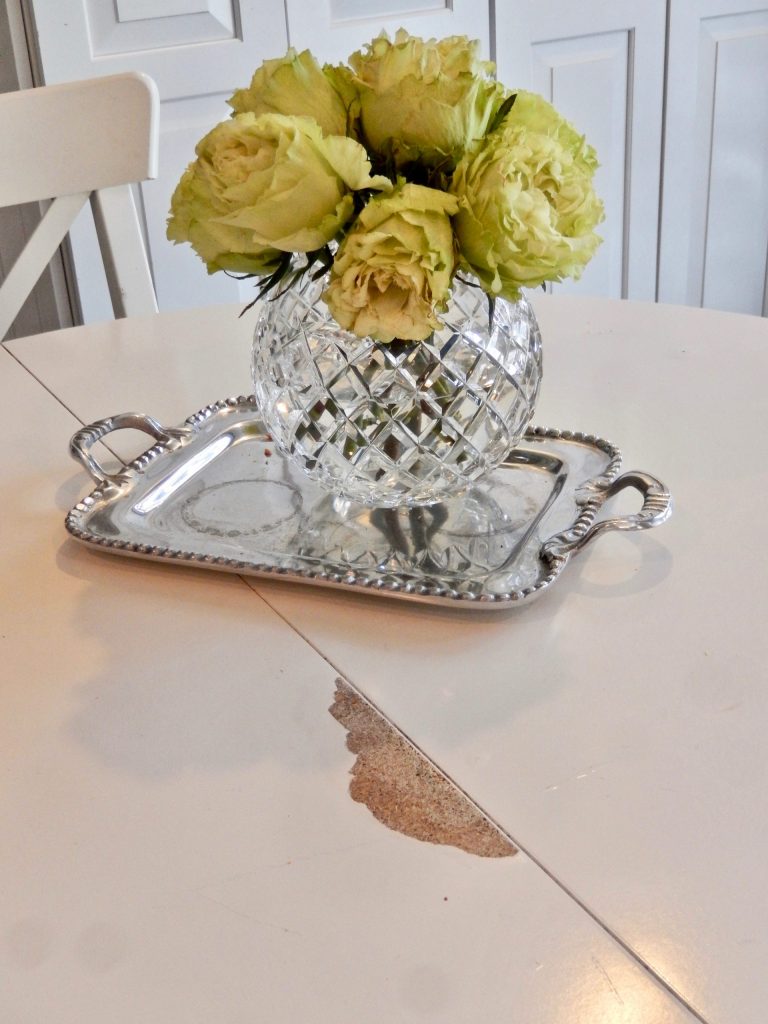
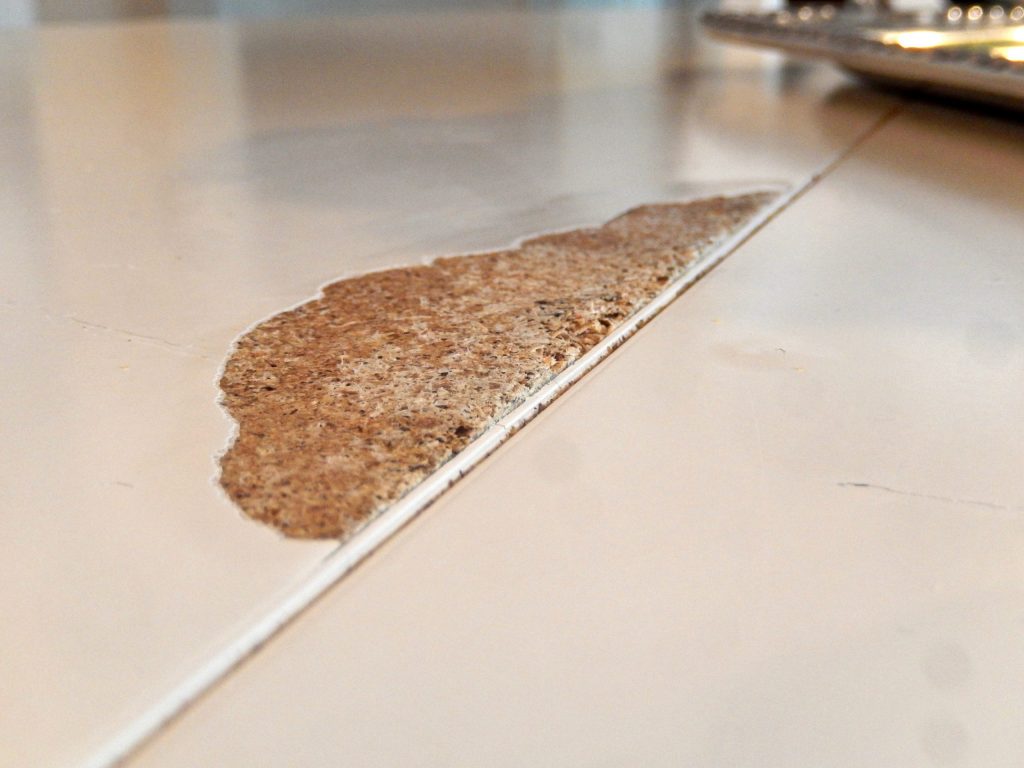
While solid wood can be successfully deployed to the wet and moist environment in our lodgings, this is not the case with our man-made substitute materials such as MDF and Chipboard.
I suppose this discovery should not have been such a surprise. After all, everyone who works with wood and wood products knows that some materials in our pallet are better suited for the wet areas of the home, versus others. There is no doubt in my mind that MDF and company are well suited for architectural millwork projects and for many vertical elements, but they should not be our #1 choice for shelves, baseboards, and furniture tops that see much weight, traffic or moisture. And while solid wood may expand with the rising humidity and may not take a uniform coat of opaque paint in the same manner as MDF or chipboard will, it will withstand repeated water splashes and will not catastrophically deform, swell, chip or disintegrate.
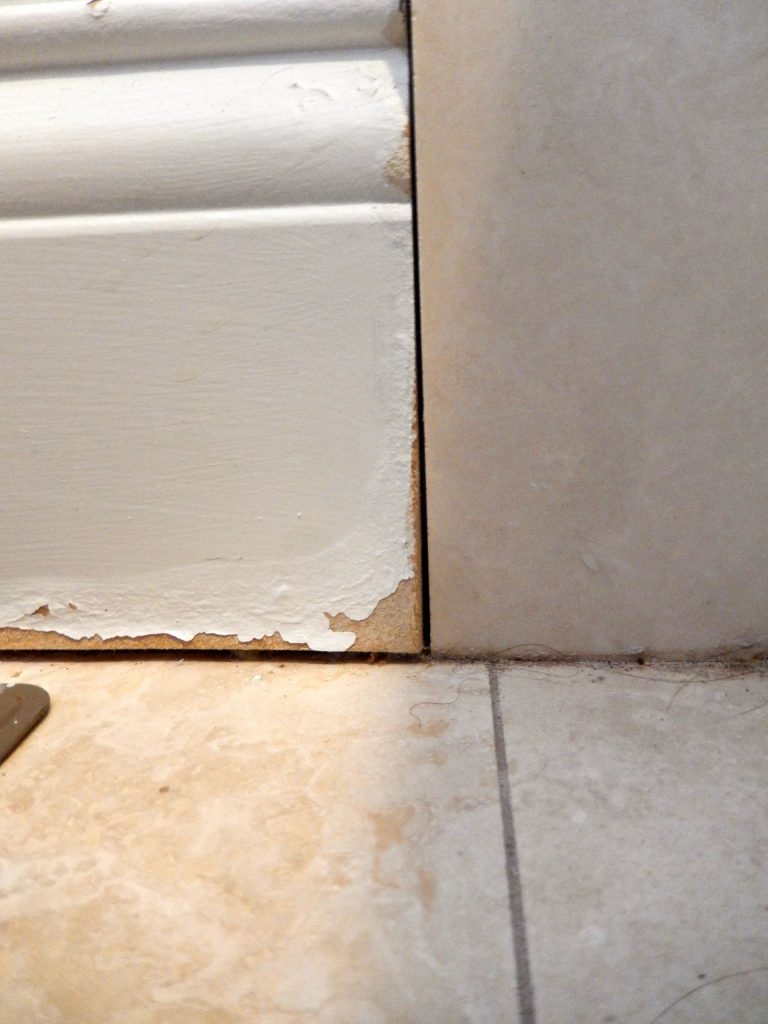
This MDF baseboard is rapidly deteriorating. Located very close to a bathtub it’s lower edge is exposed to occasional splashes of water plus humidity from the steam that a hot shower generates.
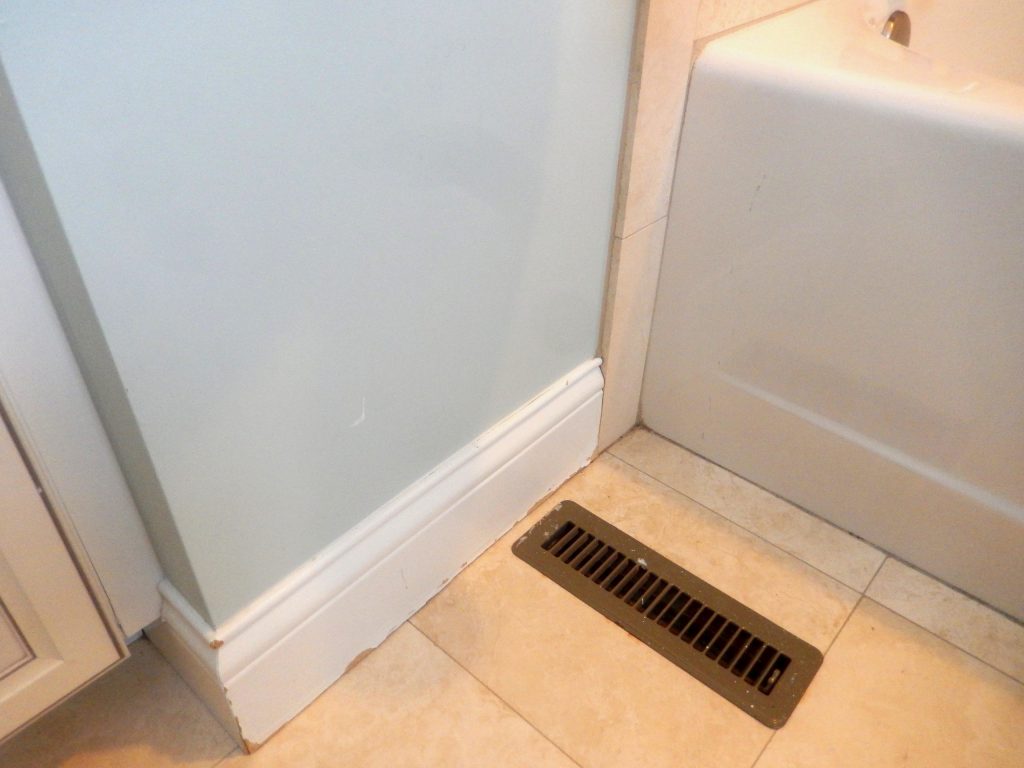
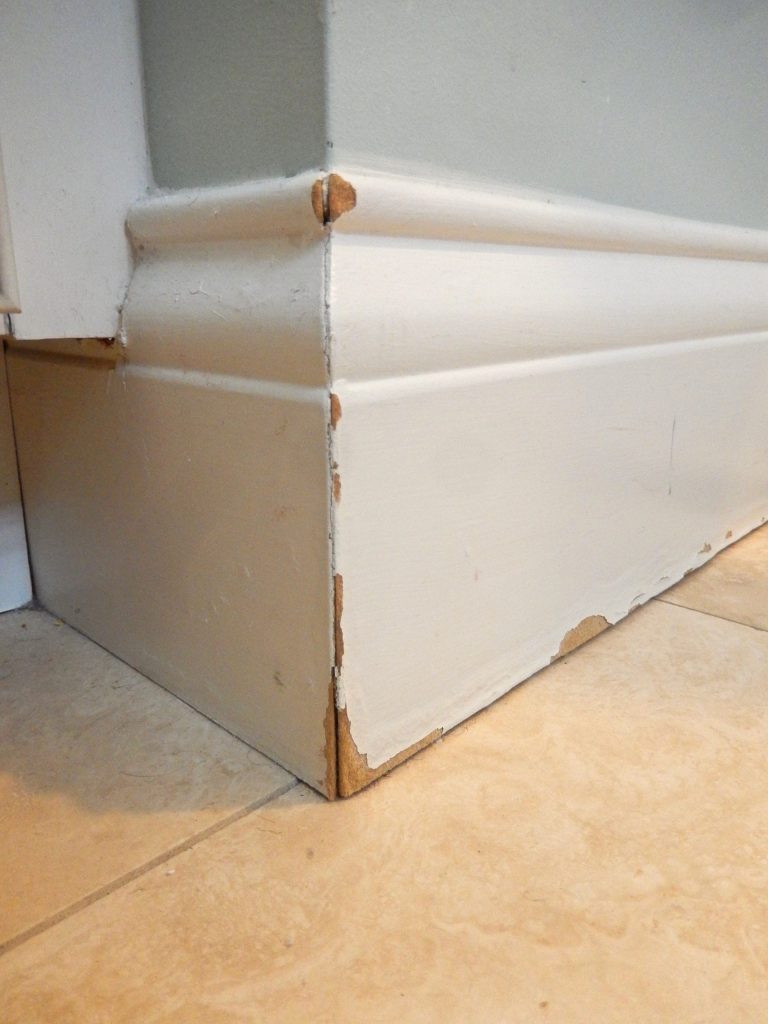
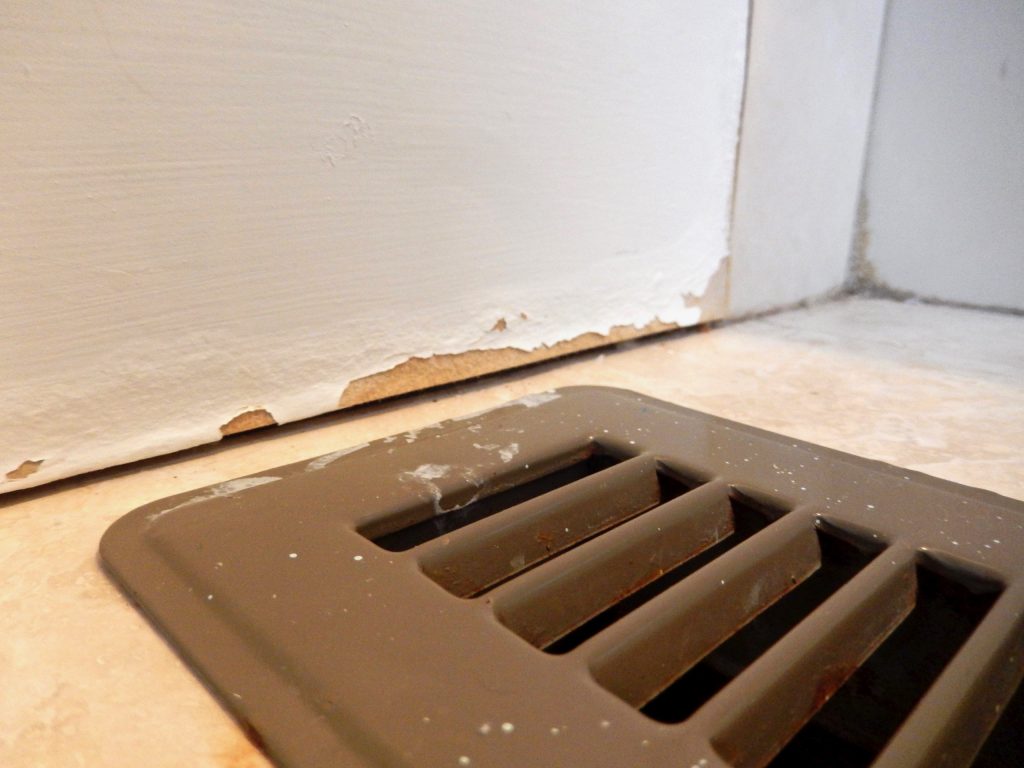
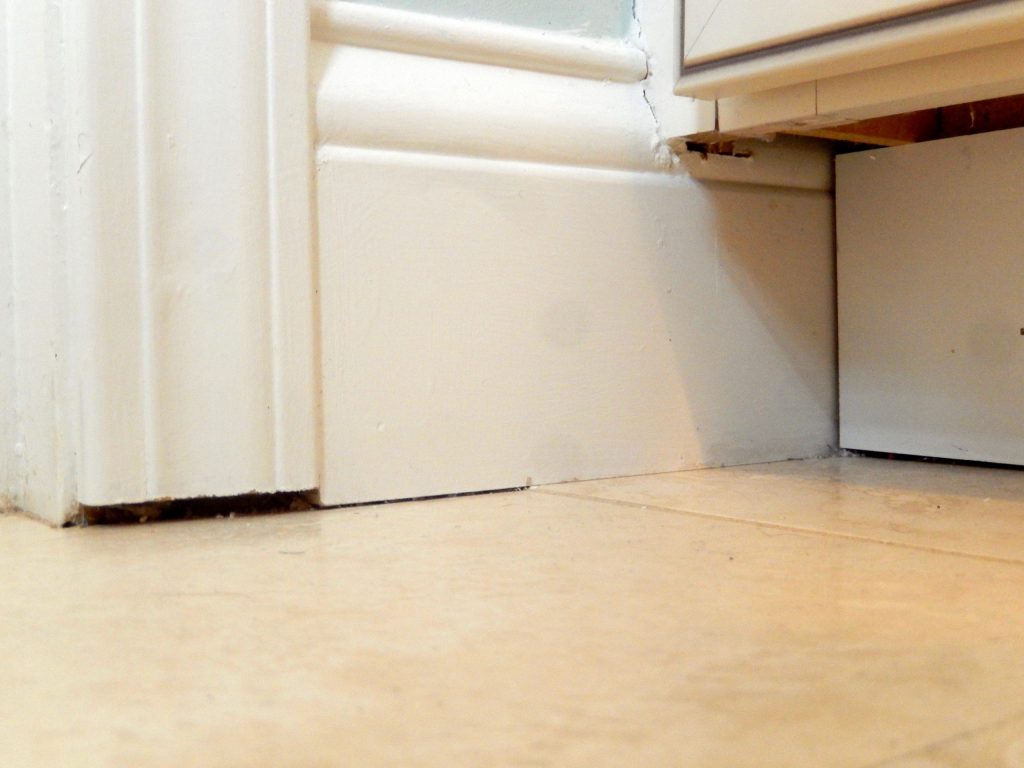
A few feet away, the same baseboard materials do not show (yet) the same level of damage.
Therefore choosing a particle board as the top for a kitchen dining table was not the most prudent decision by the makers of this furniture. Inexpensive, dimensionally stable, easy to paint and readily available in accurate thickness are the driving forces behind the use of these materials. But for anyone that is looking for longevity in their furniture, these man-made materials are not the answer, especially in a water-saturated environment. So what exactly is the reason why, in the case of the breakfast table, the paint failed? Here is what I found out.
My amateur forensic abilities led me to look closely at the paint and the failure area plus a few other areas that already showed signs of deterioration. I discovered two reasons why the paint surface allowed water to creep through, swell the chipboard underneath, and eventually force the paint to detach itself from the substrate.
The first reason is the plastic laminate that protected the leaf’s edge. While the surface of the chipboard top received a coat of paint, the saw cut edge was protected by a strip of melamine or equivalent which was glued onto it – probably with thermoplastic glue.
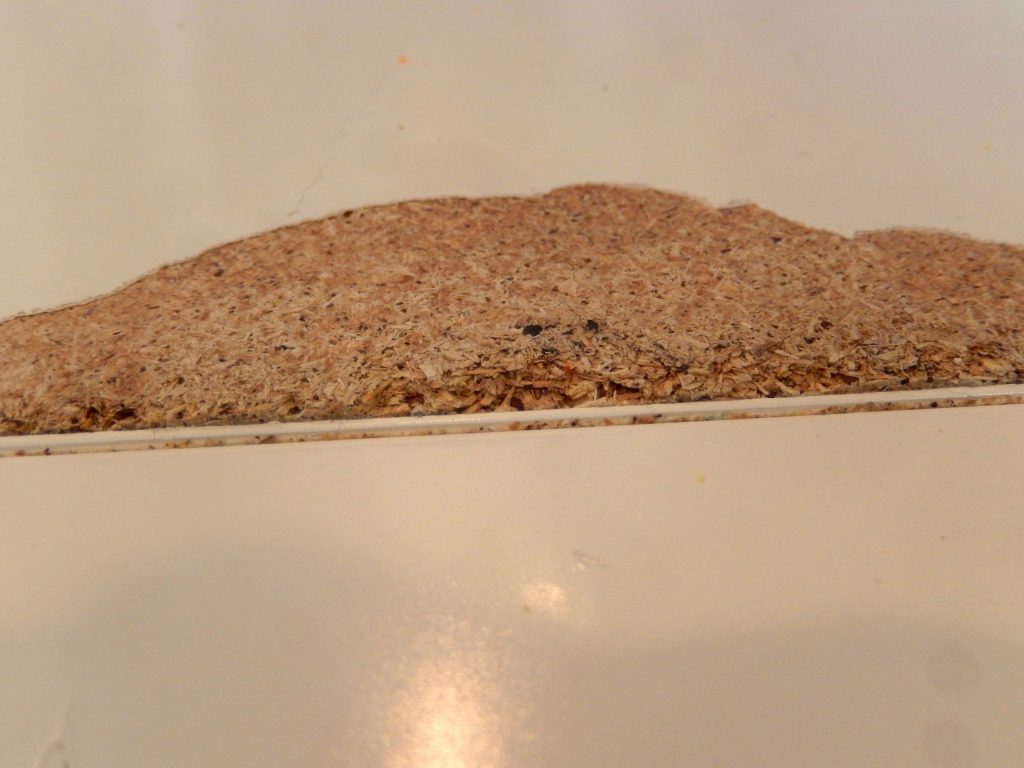
 As the top was routinely washed, water began to penetrate through the seam in between the melamine and the top. Over time the water “leavened” the particleboard and eventually expanded and broke off the paint. A few inches away from the big paint patch I discovered yet another pathology. This time it was tiny holes in the paint and swelling underneath them.
As the top was routinely washed, water began to penetrate through the seam in between the melamine and the top. Over time the water “leavened” the particleboard and eventually expanded and broke off the paint. A few inches away from the big paint patch I discovered yet another pathology. This time it was tiny holes in the paint and swelling underneath them.
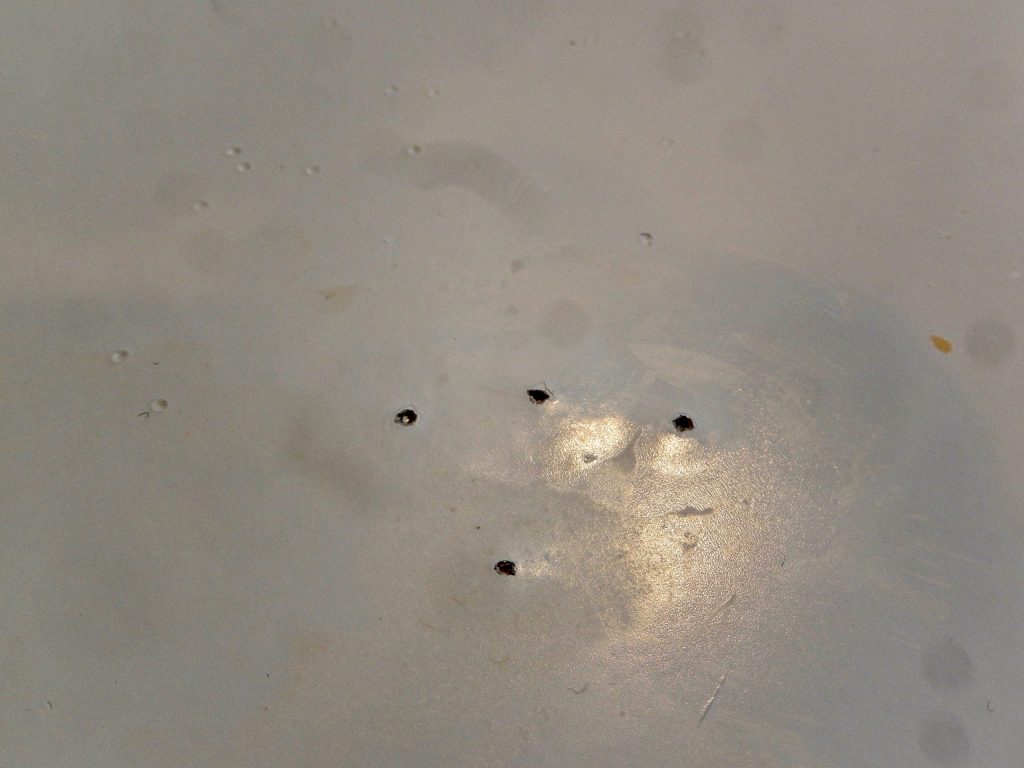
Over the few years that the kitchen table has been in use, frequent cleaning with water had a detrimental effect on the paint.
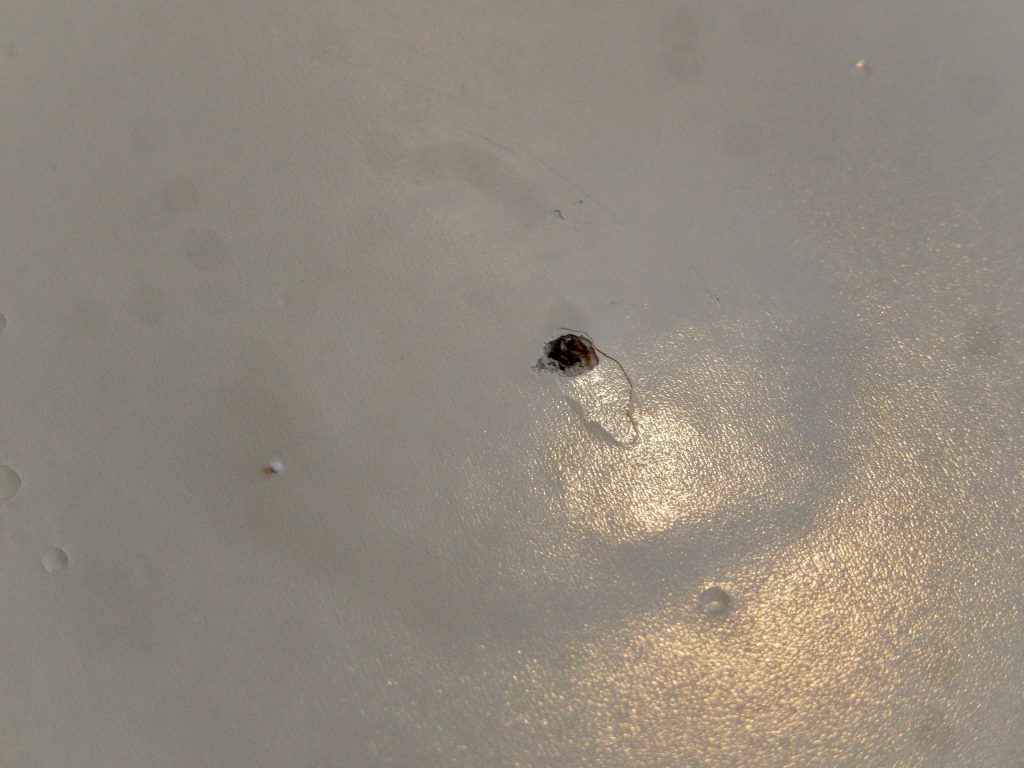
The paint that decorated and protected the table was able to repel water to some extent. Yet with the introduction of some pinpoint holes that poked through it, water began to percolate the substrate and lift it up.
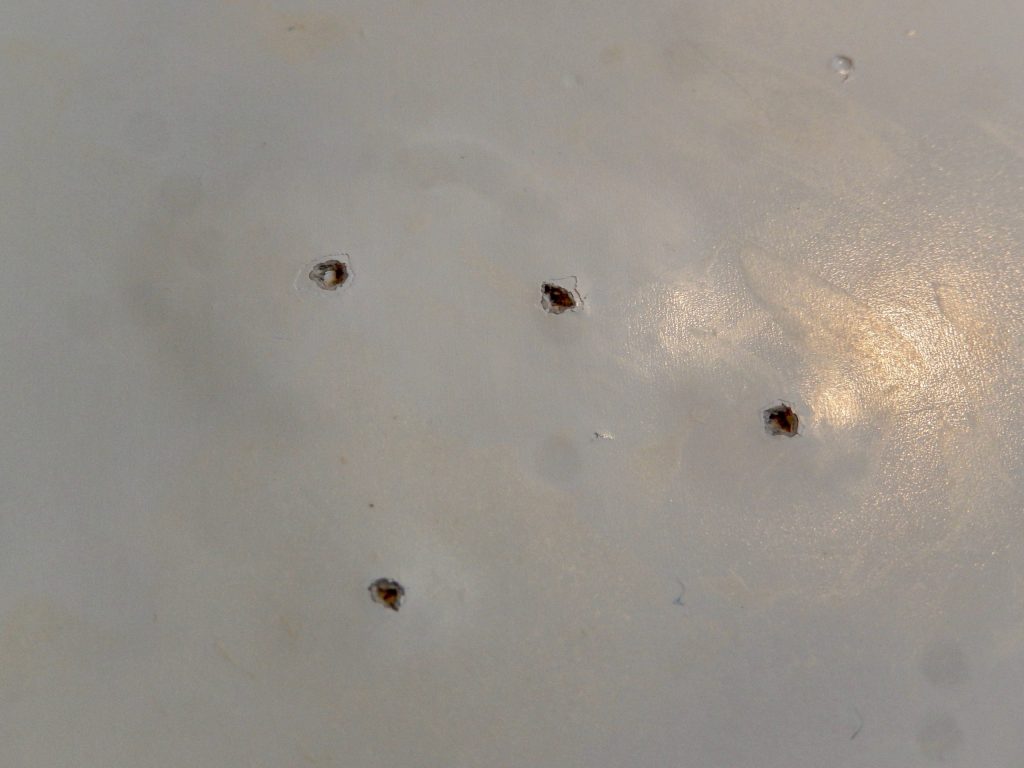 This was quite an unusual sight, for sure. What causes those holes I asked myself? Could it be a deliberate poking by awls or pencils? After all, this kitchen table was used routinely by kids for homework and craft activity. Or, were the holes that allowed water to percolate through and swell the substrate somehow related to a failing paint job? It is hard for me to answer unequivocally, but what I can say is that if the tabletop was made from solid wood or plywood or even MDF lined with a thick veneer, the damage would probably never have taken place. Therefore here are my recommendations: Use common MDF and Chipboard only in absolutely dry areas or areas that are not cleaned routinely. Favor solid wood for tabletops, countertops, baseboards and areas that are subjected to heavy use and cleaning. Solid wood surfaces, even if their protected coat of varnish or paint failed and caused them to look unattractive, can be restored almost effortlessly. Just sand off the paint or varnish and apply the protective layer. But if MDF or Chipboard begins to fail you are bound for one hell of a ride down the rabbit hole.
This was quite an unusual sight, for sure. What causes those holes I asked myself? Could it be a deliberate poking by awls or pencils? After all, this kitchen table was used routinely by kids for homework and craft activity. Or, were the holes that allowed water to percolate through and swell the substrate somehow related to a failing paint job? It is hard for me to answer unequivocally, but what I can say is that if the tabletop was made from solid wood or plywood or even MDF lined with a thick veneer, the damage would probably never have taken place. Therefore here are my recommendations: Use common MDF and Chipboard only in absolutely dry areas or areas that are not cleaned routinely. Favor solid wood for tabletops, countertops, baseboards and areas that are subjected to heavy use and cleaning. Solid wood surfaces, even if their protected coat of varnish or paint failed and caused them to look unattractive, can be restored almost effortlessly. Just sand off the paint or varnish and apply the protective layer. But if MDF or Chipboard begins to fail you are bound for one hell of a ride down the rabbit hole.
Here are some supplies and tools we find essential in our everyday work around the shop. We may receive a commission from sales referred by our links; however, we have carefully selected these products for their usefulness and quality.








